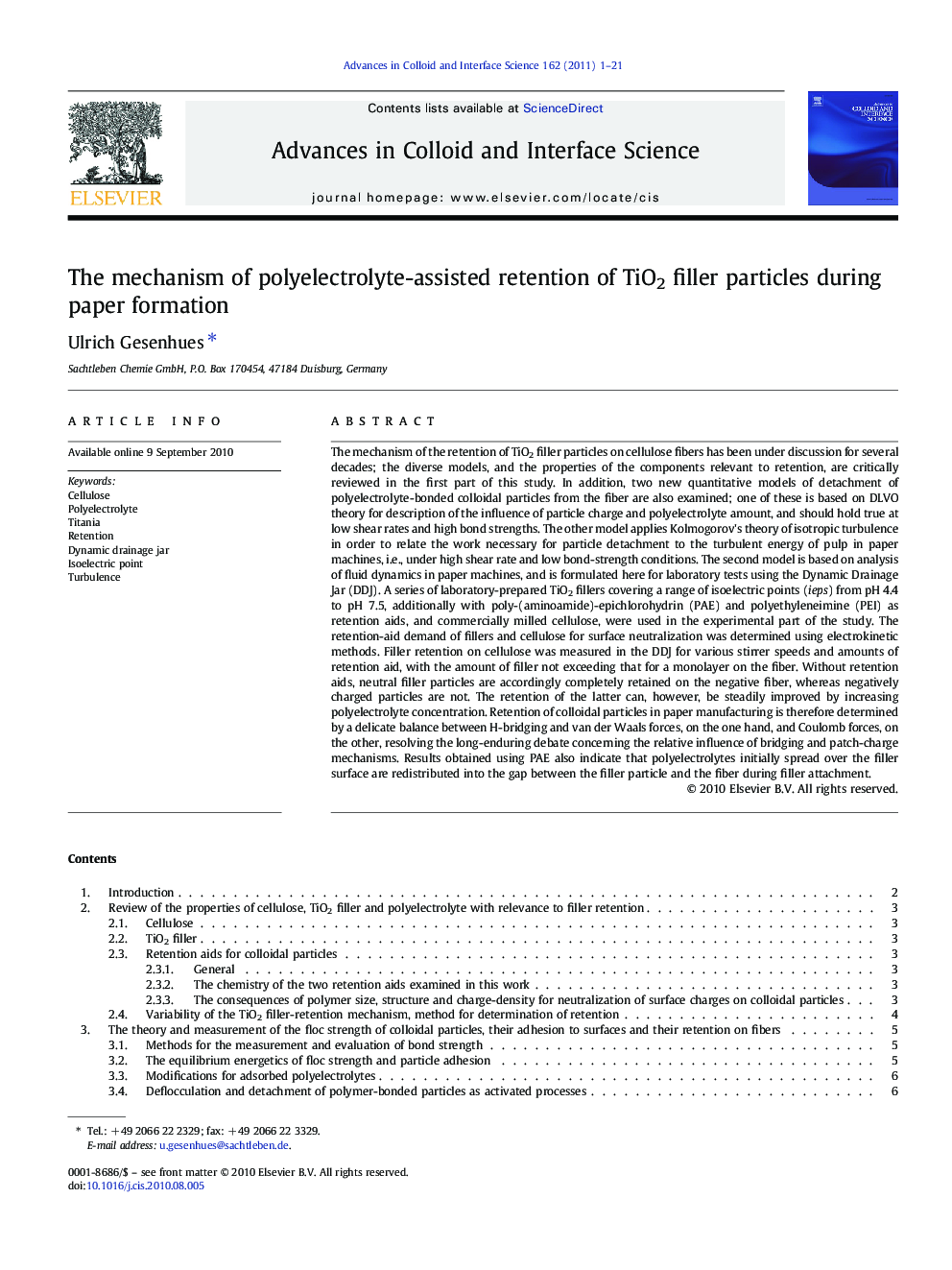| Article ID | Journal | Published Year | Pages | File Type |
|---|---|---|---|---|
| 590989 | Advances in Colloid and Interface Science | 2011 | 21 Pages |
The mechanism of the retention of TiO2 filler particles on cellulose fibers has been under discussion for several decades; the diverse models, and the properties of the components relevant to retention, are critically reviewed in the first part of this study. In addition, two new quantitative models of detachment of polyelectrolyte-bonded colloidal particles from the fiber are also examined; one of these is based on DLVO theory for description of the influence of particle charge and polyelectrolyte amount, and should hold true at low shear rates and high bond strengths. The other model applies Kolmogorov's theory of isotropic turbulence in order to relate the work necessary for particle detachment to the turbulent energy of pulp in paper machines, i.e., under high shear rate and low bond-strength conditions. The second model is based on analysis of fluid dynamics in paper machines, and is formulated here for laboratory tests using the Dynamic Drainage Jar (DDJ). A series of laboratory-prepared TiO2 fillers covering a range of isoelectric points (ieps) from pH 4.4 to pH 7.5, additionally with poly-(aminoamide)-epichlorohydrin (PAE) and polyethyleneimine (PEI) as retention aids, and commercially milled cellulose, were used in the experimental part of the study. The retention-aid demand of fillers and cellulose for surface neutralization was determined using electrokinetic methods. Filler retention on cellulose was measured in the DDJ for various stirrer speeds and amounts of retention aid, with the amount of filler not exceeding that for a monolayer on the fiber. Without retention aids, neutral filler particles are accordingly completely retained on the negative fiber, whereas negatively charged particles are not. The retention of the latter can, however, be steadily improved by increasing polyelectrolyte concentration. Retention of colloidal particles in paper manufacturing is therefore determined by a delicate balance between H-bridging and van der Waals forces, on the one hand, and Coulomb forces, on the other, resolving the long-enduring debate concerning the relative influence of bridging and patch-charge mechanisms. Results obtained using PAE also indicate that polyelectrolytes initially spread over the filler surface are redistributed into the gap between the filler particle and the fiber during filler attachment.
